How To Clear Black Spots On Your Face
If there's anything I absolutely *despise* more than acne and breakouts, it's the dark spots they leave behind on my face and body. And if you're also someone who deals with hyperpigmentation—whether it's from skin inflammation, the sun, or hormones—then you probably know just how frustrating skin discoloration can be to cover up and/or treat. So to help you out (and let's be honest, to help myself out), I turned to the experts for the best advice on how to get rid of dark spots on your skin, based on every type and cause. Keep reading for everything you really, truly need to know.
This content is imported from {embed-name}. You may be able to find the same content in another format, or you may be able to find more information, at their web site.
What causes dark spots on skin?
Dark spots seem to be pretty self-explanatory—they're spots that are darker than the rest of your skin—but the causes and treatments can be different. For example, that pimple that left behind a dark acne scar (aka post-inflammatory hyperpigmentation) is a common cause for dark spots, but injuries, hormones, and sun exposure can also leave your skin with discoloration that may or may not go away on its own.
Dr. Pierre explains that post-inflammatory hyperpigmentation from acne, injuries, bug bites, or scratches can fade naturally in a few weeks or months, but things like sun damage or melasma (hyperpigmentation caused by hormones and sun exposure) will need topical or laser intervention, if you're trying to get rid of them. Which, speaking of...
How do you get rid of dark spots fast?
Fortunately for you (and me), we've got a few treatments to get rid of dark spots and dark patches. Buuut that being said, this is the part where I remind you that the first step to getting rid of dark spots is to see a dermatologist who can identify what type of discoloration you're working with, figure out the cause, and then determine the best treatment options for your skin.
"The cause of the dark spots is actually an important consideration in how to treat them," Dr. Pierre explains. "Although there is definitely an overlap in treatment plans, different combinations will be used depending on the factors at play." Basically, a dark spot caused by acne won't necessarily be treated the same way as a dark patch caused by hormones.
While you wait for that consultation with your doc, find out all about the best at-home products and in-office treatments for fading dark spots, below.
The best products for dark spots
Many dark spots will eventually go away on their own, but how long that takes can be anywhere from a few weeks to a few years. Yup, years. So if you're trying to get rid of dark spots on your skin at home—and fast—look for products that contain these ingredients to fade hyperpigmentation asap.
1. Glycolic acid
Ditch your face scrub (sorry, but scrubs are generally too aggressive for skin that's prone to dark spots and hyperpigmentation anyways), and get yourself a chemical exfoliant/acid, instead. One chemical exfoliant that Dr. Pierre recommends for dark spots is glycolic acid, which is an alpha hydroxy acid (AHA) that helps dissolve and shed the "glue" between dead, discolored skin cells, leaving you with a clearer, brighter, all-around glowier face.
Plus, by chemically exfoliating away surface-level dead cells, your skin will be better able to absorb any spot treatments or brightening serums you apply afterward, which helps make them more effective. Win-win.
4 ways to use glycolic acid in your routine
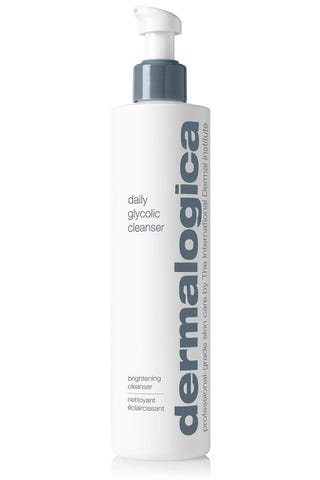
This Glycolic Acid Face Wash
Dermalogica Daily Glycolic Cleanser

This Glycolic Acid Toner
The Inkey List Glycolic Acid Exfoliating Toner
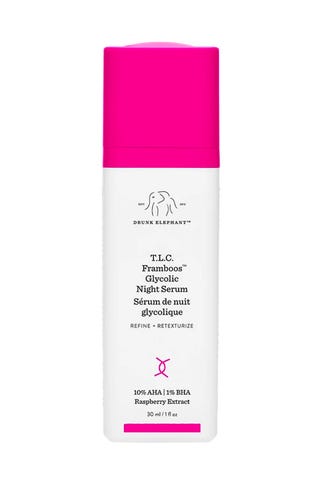
This Glycolic Acid Serum
Drunk Elephant T.L.C. Framboos Glycolic Resurfacing Night Serum
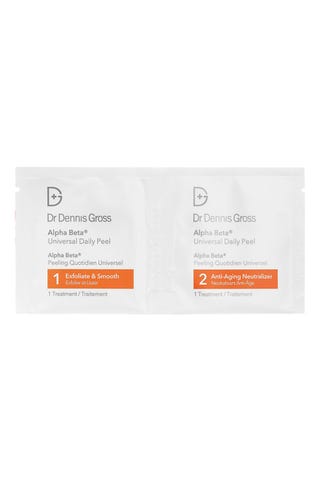
These Glycolic Acid Peel Pads
Dr. Dennis Gross Skincare Alpha Beta Universal Daily Peel
2. Salicylic acid
Another type of chemical exfoliant is called beta hydroxy acids (BHA), which you might know as salicylic acid. As a general rule, dark spots from acne benefit from using chemical exfoliators with salicylic acid because it not only helps with redness and irritation, but it also helps clear excess oil from your pores. Basically, a treatment and a cure. And not only does salicylic acid gently exfoliate, but it also helps to encourage the formation of new skin cells to further help with dark spots.
3. Retinol
Retinoids (either prescription or OTC, like the ones below) can work wonders for smoothing fine lines, exfoliating, and yup, improving dark spots by stimulating collagen production and speeding up cell turnover—i.e., churning out fresher, newer, brighter skin—but be sure to start low and go slow.
Retinol is notorious for irritating skin at first—something Dr. Pierre says you definitely don't want. "You should minimize any irritation to the area because inflammation can damage the pigment cells, causing them to leak out more pigment," Dr. Pierre explains. Basically, going too fast and applying too much at first can just make dark spots worse.
Instead, try applying your retinol one night a week for one week, then two nights a week for two weeks. If your skin isn't responding with flakes and irritation, bump it up to three nights a week for three weeks, and eventually to every other night. Yes, the process is going to feel agonizingly slow (I've been there), but you seriously need to trust the journey.
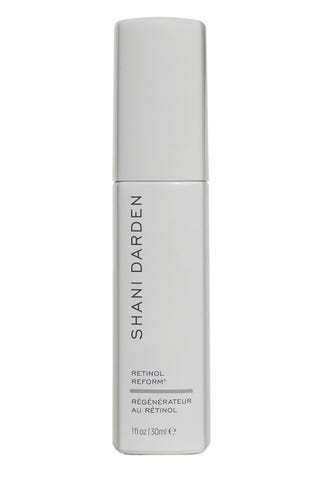
Shani Darden Skin Care Retinol Reform

Kiehl's Retinol Skin-Renewing Daily Micro-Dose Serum

Paula's Choice Clinical 1% Retinol Treatment
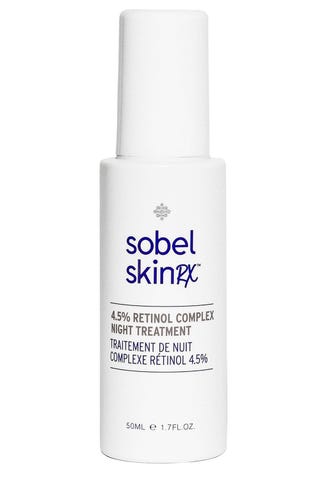
Sobel Skin Rx 4.5% Retinol Complex Night Treatment
4. Niacinamide
It's one of the most popular ingredients in the skincare world rn, and lucky for you, it also happens to be great at treating dark spots. Use it alone or in combination with other skin brighteners to fade existing hyperpigmentation and give your skin tone an even, glowy look. Niacinamide is also anti-inflammatory, so it's a great option for anyone with sensitive, redness-prone skin.
5. Hydrocortisone cream
Treat your pimples with a one percent hydrocortisone cream (you can get it at any drugstore). It's an anti-inflammatory, so it'll soothe redness, swelling, and inflammation—and unlike traditional acne treatments, it won't dry out or irritate your skin (which can end up creating more hyperpigmentation).
6. Hydroquinone
What Dr. Pierre refers to as the king for dark spots, hydroquinone is a v powerful bleaching ingredient for lightening hyperpigmentation, and can be especially helpful for melasma. That being said, hydroquinone can also be highly irritating and is slowly being discontinued from over-the-counter products—which is kind of a good thing, since you should see your dermatologist before trying hydroquinone so you can maximize your results while minimizing side effects.
7. Vitamin C
If you aren't already using a vitamin C serum in your regular routine, wyed!? Never mind the fact that this antioxidant helps protect your skin against free-radical damage from UV radiation and pollution and stimulates collagen production, vitamin C also blocks pigment production and prevents existing pigment from getting darker.
Top-rated vitamin C serums
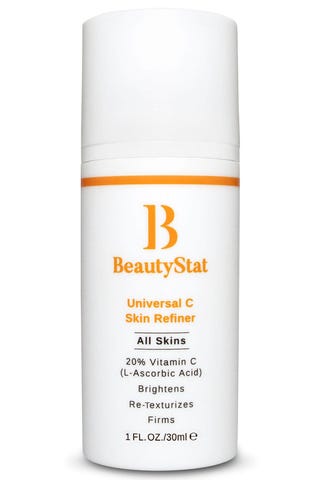
BeautyStat Universal C Skin Refiner
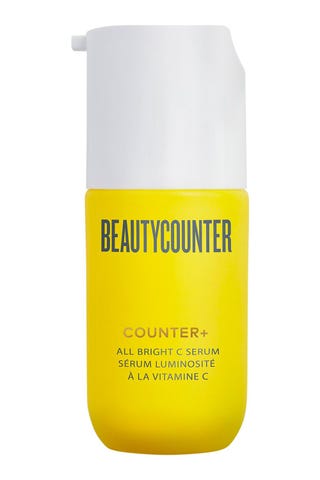
Beautycounter Counter+ All Bright C Serum
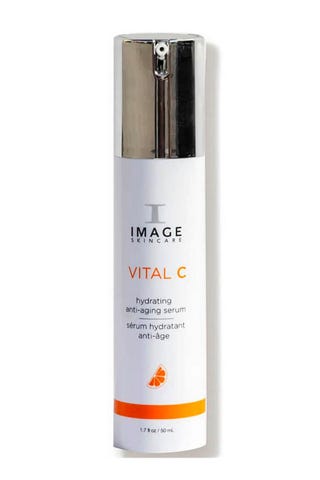
Image Skincare Vital C Hydrating Anti-Aging Serum
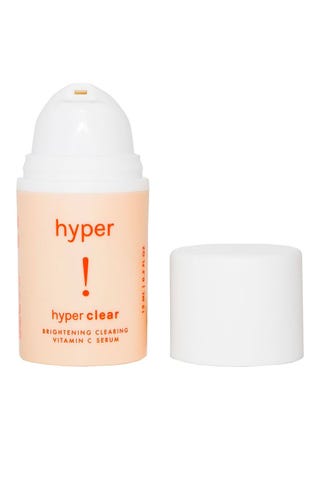
Hyper Brightening Dark Spot Vitamin C Serum
8. Tranexamic acid
Another ingredient Dr. Pierre says would be the most effective at improving the appearance of dark spots is the skin brightener called tranexamic acid, which helps brighten skin and inhibit hyperpigmentation. It might not be as well-known (or as intense) as some of the other treatments on this list, but it's commonly paired with them to combat hyperpigmentation and melasma.
9. Kojic acid
Another antioxidant to look for (and one of Dr. Pierre's top picks) is kojic acid, which is a favorite for brightening the skin because of its ability to inhibit the production of excess pigment. Committing to a dark-spot-correcting serum with any and all of the brightening ingredients we mentioned before (vitamin c, retinol, tranexamic acid, kojic acid)—can significantly speed up the process and help fade dark spots even faster.
10. Hydrocolloid patches
I know, it's nearly impossible to resist, but keep your hands off your face. If you've given into temptation in the past and picked a pimple, you know the aftermath: an inflamed red or brown mark that can stick around for months as a lovely result of skin trauma. Hydrocolloid patches (aka pimple patches) create a moist environment for wounds/pimples to heal quickly and help prevent scarring.
11. Sunscreen
If there's only one thing you follow from this entire list, make it this one: Use a broad-spectrum sunscreen with SPF 30 or more every. single. day. Not only does regularly using sunblock help to prevent skin cancer, it also shields your skin from harmful UV rays—the culprit behind most dark spots.
In response to the sun's UV rays, cells send out protective pigment (or melanin) to keep your skin from getting burned. You know this process as "getting tan," but it's really your skin trying to protect itself. So although you might like your summer bronze, know that deep within the layers of your skin, you now have damage that will later surface as tiny dark spots on your face. Also important to note: P ost-inflammatory hyperpigmentation from breakouts is made worse by the sun, so wearing SPF is a must for keeping the cycle from occurring.
The 4 best face sunscreens to try right now
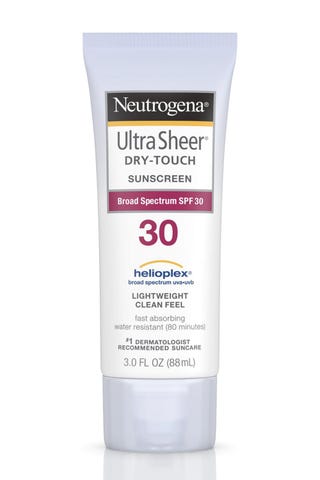
This Drugstore Sunscreen
Neutrogena Ultra Sheer Dry-Touch Sunscreen Broad Spectrum SPF 30
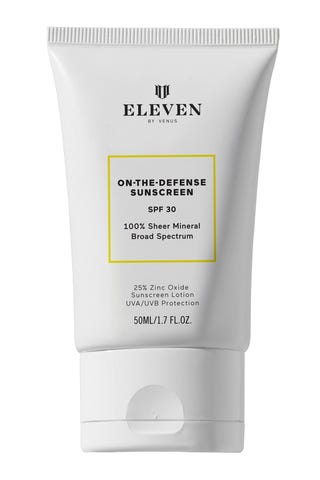
This Mineral Sunscreen
Eleven by Venus On-The-Defense Sunscreen SPF 30
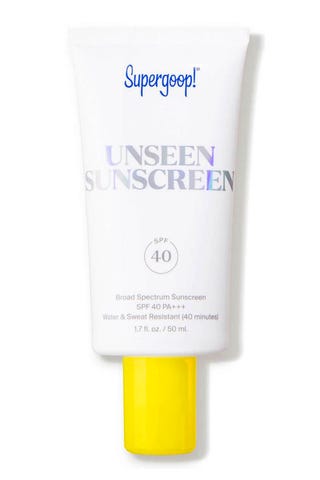
This Clear Sunscreen
Supergoop Unseen Sunscreen SPF 40
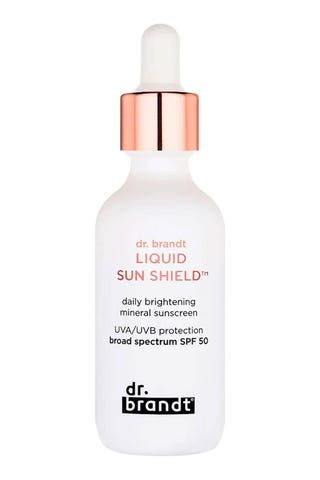
This Lightweight Sunscreen
Dr. Brandt Skincare Liquid Sun Shield Daily Brightening Mineral Sunscreen
The best professional dark spot treatments
At-home skincare routines take time to visibly fade dark spots (like, a solid three to six months, minimum). If you want your dark spots gone fast—like for a wedding or special event—and are ready to drop some $$ (sry, these treatments are on the pricey side) you can head to the dermatologist for the following:
1. Chemical peel
Chemical face peels can successfully treat all kinds of hyperpigmentation, including dark spots. Your derm will asses your skin and then cook up a blend of acids and skin brighteners (like the ones I mentioned above) to exfoliate the top layers of your skin and, in the case of stronger peels, target irregular pigment in the deeper layers. Prices vary from practice to practice, but expect to shell out $300+ per peel—and know that you may need multiple treatments to achieve the best results.
2. Laser treatment
There are various lasers that help brighten and even out skin tone, but the kind you need to know about are called non-ablative fractional. "This type of laser—when combined with a good skincare routine is really the move for treating dark marks," says cosmetic dermatologist Jason Emer, MD. It uses heat to help reduce pigment in the upper and deeper layers of the skin (and also stimulate collagen production, which is why it's also commonly used for skin smoothing and tightening). There are a bunch of these lasers out there, including Fraxel and Clear & Brilliant, but Dr. Emer recommends the Sciton Moxi (expect to spend around $800 for a treatment). It's safe for all skin types, can be done year-round, and involves little to no downtime.
3. Microneedling treatment
Dr. Pierre also suggests microneedling with special topical preparations as another option for treating dark spots—as long as you leave it to the pros. The treatment involves tiny punctures with needles to encourage the body's wound-healing response and stimulate collagen and elastin production, which can be really effective when done correctly and safely. But remember how I said injuries or irritation could lead to extra dark spots? Yeah, exactly. Which is why this isn't something you want to experiment with yourself.
Before you go...
"All of these professional treatment are powerful and should be used cautiously, particularly on patients with darker skin types to avoid irritation and further discoloration, says Jennifer David, DO. So only ever book a treatment with a board-certified derm or plastic surgeon, and be sure to ask to see before-and-after pics of patients with your skin tone.
Lauren Balsamo Deputy Beauty Director Lauren Balsamo is the deputy beauty director at Cosmopolitan covering all things skin, hair, makeup, and nails for both the magazine and website.
This content is created and maintained by a third party, and imported onto this page to help users provide their email addresses. You may be able to find more information about this and similar content at piano.io
How To Clear Black Spots On Your Face
Source: https://www.cosmopolitan.com/style-beauty/beauty/advice/a42924/how-to-get-and-keep-skin-spot-free/
Posted by: fisheldraugh.blogspot.com

0 Response to "How To Clear Black Spots On Your Face"
Post a Comment